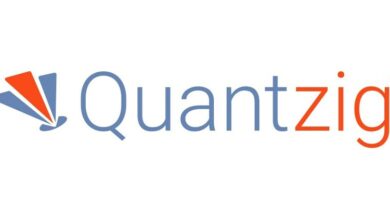Using AI in Data Analysis – How to Make Sense of Big Data

The last few years have seen rapid advancements in artificial intelligence (AI) and machine learning (ML). They affect all types of businesses and provide many positive impacts on advertising and marketing. One particular use case for AI is data analytics. Modern businesses generate considerable quantities of data, and AI data analysis makes sense of all this data in a manageable way, turning it into useful information. Marketers find AI and ML applications to be of great help when sifting through Big Data to discover relevant insights when targeting specific customers. This data would previously have been impenetrable, but now, thanks to the power of AI, businesses can more easily filter potential leads and discover whom they should focus on and devote resources to.
One visible sign of the use of artificial intelligence online is Google Ads. How often do you see an advertisement for a particular product and others much like it, follow you around the net? And it won’t be some random product. The ad will usually be for something that interests you, which you may have searched for online recently. This occurs because Google uses AI and ML to understand the products we like. The more time we spend online and the more searches we undertake, the better Google understands our tastes. It uses this knowledge to determine which ads it should serve us.
Another important use of AI is in making sense of the vast quantity of Big Data now available. Traditional data extraction and intelligence tools hit physical limits however the advancement of AI now makes more thorough data analysis possible and practical.
AI Data Analysis – How AI Can Make Sense Out of Big Data:
Making Sense Out of Big Data
Technopedia defines Big Data as being, “a process that is used when traditional data mining and handling techniques cannot uncover the insights and meaning of the underlying data.” This indicates that Big Data is not just a massive quantity of data; it also involves the processes required to turn that data into useful information. This type of data requires a different processing approach from what we have used in the past.
Not only has more data been generated over time, but there have also been new types of data created. Initially, businesses focused on processing structured data, for example, the types that you could store in a text file or spreadsheet. But nowadays, much data is unstructured – and these aren’t always obvious. For example, although predominantly text-based, emails aren’t in a form that traditional data mining tools can access and make sense of. And think nowadays, how much data exists as audio, video, and image files.
The Internet of Things has expanded the collection of data even wider, for example, think about everything the sensors on your phone, or even Fitbit, record and collect.
Recent expansions in the capabilities and availability of facial and voice recognition contribute vast amounts of data and these require Big Data processing capabilities to have any value.
The advent of Big Data has led to an increase in demand for ways to process it efficiently and cost-effectively. Otherwise collecting that data becomes pointless and a massive waste of resources. You need a way to scan huge quantities of data to look for patterns or connections, that you can then use in your strategic planning.
Data scientists describe Big Data in terms of the 3Vs:


Volume – the quantity of data generated from various sources
Velocity – the speed of generated data
Variety – the mix of data types included in the overall collection of data – structured / semi-structured / unstructured.
Any data analysis system must take the 3Vs of the data it handles into account, particularly when determining its capabilities.
What is Data Analysis?
Data analysis is the process of studying data and drawing patterns. It is at the hub of the field of data analytics. Data analysis includes both descriptive analysis (analyzing data and describing what’s happening) and predictive analysis (predicting what will happen in the future, based on current and past activities).
Many businesses struggle to access all the data relating to their business. Often, suitable data is readily available, but the business lacks tools to analyze it into a usable form. The data may be scattered across many places, meaning that a business first needs to gather all the necessary data before they even begin data analysis. And then once a firm has collected data from a range of sources, they often need to convert it into a common form and merge it. This can be as simple as being able to compare data in .CSV and Excel file formats.
Oracle observes that the data gathering process can be much more difficult and time-consuming than the actual data analysis, particularly where it’s manual and non-repeatable. Typically, firms have to “reinvent the wheel” every time they need to carry out this data analysis.
There are four main types of data analytics, according to Gartner’s Ascendency Model:
1. Descriptive data analytics – addresses basic questions like “how many, when, where, and what.” These are the focus of business intelligence (BI) tools and dashboards. Descriptive analytics can be further separated into ad hoc reporting (custom reports generated for you as and when required) and canned reports (scheduled reports following a template or common format). [What Happened?]
2. Diagnostic data analytics – the process of examining data to understand the cause and effect or why something happened. [Why did it happen?]
3. Predictive data analytics – you can use these to identify trends, correlations, and causation. These can include both predictive modeling and statistical modeling. [What will happen?]
4. Prescriptive data analytics – where AI and big data combine to help predict outcomes and identify what actions to take. [How can we make it happen?]


Each of these types of data analysis has a specific purpose, with some focusing on the future, and others on better understanding the past. No matter which type best suits your needs, however, the primary goal of a data analyst is to use data to increase efficiency and improve performance, by finding patterns in data.
Seven technologies encompass data analytics and Big Data:


- Predictive Analytics – statistical algorithms working on data that determine future results based on historical data
- Hadoop – a software framework capable of processing and containing vast levels of data
- Data Mining – analysis of vast quantities of data to uncover connections and patterns
- Machine Learning – that part of AI that involves programming computers to learn from experience, so they can generate models to analyze large data sets and produce better, more refined results.
- Text Mining – like Data Mining, but aiming to analyze available text to develop insights and understanding – closely associated with Natural Language Processing (NLP)
- In-memory Analytics – analysis of system memory data to gain insight
- Data Management – improving the storage, quality, and organization of data in organizations.
Using AI for Data Analysis
As we saw in What is AI Marketing?, the emergence of AI has caused a seismic shift that has transformed the marketing industry beyond recognition. One of the reasons for this is the power of AI to speed up and make sense of data analysis. AI has given marketers the ability to harness vast quantities of data, automate complex processes, personalize content, and make predictions with previously unheralded accuracy.
AI uses computing devices to simulate human intelligence processes. It generally takes large sums of training data, “learns” from this, and then analyzes live data for correlations and patterns, making predictions about what this means for the future.
Traditional data analysis requires considerable human input to manipulate code every time somebody needs a change made. AI, however, removes this requirement, as it can make the necessary adjustments independently, particularly if it incorporates machine learning.
AI can encompass all seven of the technologies we referred to above to make the processing of Big Data possible and manageable.
How Does AI Data Analysis Differ from Traditional Data Analysis
The main differences between AI and traditional data analysis relate to capacity and computer independence. We had previously hit a limit on the quantity of data that humans could efficiently process. To go any further into data analysis typically required so many resources that it quickly became impractical and uneconomical. AI-based systems can handle substantially more data thrown at them and work at superhuman speed to achieve better results.
Also, systems that include machine learning, allow computers to learn and work independently, turning disparate forms of raw data into meaningful analyses. These systems need human input at the beginning, but before long they can function independently, leaving staff to do other higher-priority tasks.
Uses for AI Data Analytics
Machine learning gives opportunities for businesses to process massive quantities of data and discover trends and patterns. This offers them the chance to optimize systems and provide personalized service to their customers.
Businesses can obtain data from a wide variety of sources. They can even use facial detection and recognition software to personalize marketing to individuals. Intelligent automation software can learn from the emotional reactions consumers display, and the software can adapt its marketing messages accordingly. Firms can improve customer service, and in turn, the customer experience, by combining historical customer data, complex algorithms, natural language processing, and even emotional analysis to better predict customer wishes.
Walmart, for instance, uses artificial intelligence models to better predict the optimal inventory mix for any store on a given day. For example, they feed weather information into their systems so that they can adopt store stock to reflect customer demand better. They know that a store in an area where a hurricane is forecast will have increased demand for things like sandbags, bottled water, and wet/dry vacuums. Walmart knows to rush ship these items from their distribution centers to that store. The more weather events there are, the more the system learns customer demands.
Another case where Walmart adapts in real-time to its data analytics is with AI smart pricing. They are experimenting with Wi-Fi-enabled cameras with real-time data in the meat aisles, adapting prices to reduce spoilage and waste. Walmart has found that this smart pricing has led to a 30% sales boost in the department.
How Can AI be Used to Uncover Insights and Trends from Customer Data?
As Deeper Insights observes, AI can revolutionize the way we gather product and consumer insights. Businesses can leverage the power of unstructured data analytics to track consumer behavior such as buying patterns or finding unmet needs in a crowded product category. It can assist businesses to innovate, expand, upsell, and cross-sell their products and services to markets previously unthought of.
Unstructured data, such as reviews, comments, social media posts, and forums, can truly capture the views of your customers. Yet this data would previously have been excluded from your business decision-making, most likely placed in the “too hard” category. These give brands a deeper understanding of customer behaviors and hidden opportunities.
Text analytics can give insight into customer sentiment, conversation trends, discussed topics, and other helpful information. AI-powered text analytics provides predictive analysis capabilities allowing businesses to anticipate customer needs and market trends better.
Predictive and prescriptive data analytics help you determine what customers want before they do. This ensures you can order the right types and quantities of inventory with little wastage, improve customer service, maximize business efficiency, and increase your customer lifetime value.
Wrapping Things Up
AI data analysis uses machine learning algorithms to monitor and analyze huge amounts of data, automating time-consuming work normally done by data analysts. AI and machine learning now transform data analytics by offering levels of speed, scale, and granularity that are humanly impossible and were previously unimaginable.
Another advantage of using AI data analysis is that, unlike human data analysts, AI algorithms aren’t handicapped by pre-existing assumptions and biases. AI analytics can analyze vast quantities of data and provide a completely objective analysis. In addition, machine learning algorithms can respond to business changes as soon as they occur.
Frequently Asked Questions
What is AI data analysis?
AI data analysis involves using artificial intelligence (AI) and machine learning (ML) algorithms to process and analyze large datasets (Big Data). It helps businesses make sense of vast quantities of data by identifying patterns, trends, and insights that would be difficult to detect using traditional data analysis methods.
How does AI data analysis differ from traditional data analysis?
AI data analysis differs from traditional data analysis in its ability to handle much larger volumes of data at superhuman speeds. AI can independently adjust and improve its analysis using machine learning, whereas traditional methods require significant human input and cannot process data as efficiently or at such a scale.
What are the benefits of using AI for data analysis?
The benefits of using AI for data analysis include increased efficiency, the ability to process vast amounts of data quickly, more accurate and objective insights, the automation of time-consuming tasks, and the ability to uncover hidden trends and patterns. AI also reduces human biases and assumptions in data analysis.
What are some common uses of AI data analytics in businesses?
AI data analytics is used in various ways, including predicting customer behavior, optimizing inventory management, personalizing marketing efforts, improving customer service through predictive analysis, and analyzing unstructured data such as social media posts and customer reviews to gain deeper insights into customer sentiment and trends.
How can AI help uncover insights and trends from customer data?
AI helps uncover insights and trends from customer data by analyzing unstructured data (e.g., social media posts, reviews) and structured data (e.g., sales records) to identify buying patterns, unmet needs, customer sentiment, and conversation trends. Predictive and prescriptive analytics enable businesses to anticipate customer needs, optimize inventory, and enhance customer service, thereby improving overall business efficiency and customer lifetime value.



